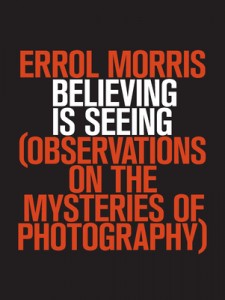
While some of the discussion and technical analysis of the Fenton photographs of the Crimean War can be a bit much for some readers, the conclusions drawn from these discussions are captivating. Did Fenton stage the photo with the cannon balls on the road or did he not and which photo did he take first — The one with the cannon balls on the road or in the ditch? When I first looked at the photographs, the one with the cannon balls on the road appeared to be a more powerful image, but then it appears to be staged because the balls are too evenly randomized.
“To use the familiar gestalt image of the duck-rabbit: if we believe we see a rabbit, we see a rabbit. If we believe we see a duck, we see a duck. But the situation is even worse than the Gestalt psychologists imagined. Our beliefs can completely defeat sensory evidence.” (page 83-4)
Photographers often frame images in a way that captures the best of a scene, that’s the most aesthetically pleasing, and that provides the best lighting. Moreover, photographers will take more than one picture of the same scene, if possible, and choose the best image to submit to magazines, etc. They are framing the image we see regardless of whether readers realize it or not, but readers also are framing the scene and history. Morris aptly titles this examination of photography “Believing Is Seeing” because each viewer’s beliefs, prejudices, etc., often frame their perspective when looking at a photograph.
Morris’ book is tutorial, historical, and poignant in how it examines photography, conjecture about photography and news articles, and human reactions to images. My analytical brain was working overtime with this analysis, particularly when I got to the Abu Ghraib’s The Hooded Man. One thing Morris clearly demonstrates is that each photo has a history or a context behind it, and without conducting appropriate research and background verifications, viewers and readers can draw the wrong conclusions. In the discussion of The Hooded Man photo and the false identification of Ali Shalal Qaissi (called The Claw) as that man, two photos from two different perspectives are discussed, one taken by Sergeant Ivan Frederick without the flash that became iconic and one taken with a flash by Sabrina Harman. While Qaissi is not the man in the iconic photo, Abdou Hussain Saad Falah (called Gilligan) is said to be that man, but in his testimony to the Taguba Commission he mentions a flash when his captors took his photo with the hood and blanket on. So, is this telling us that he only remembers the flash and that maybe something happened between Frederick’s photo session and that of Harman’s, or is the flash more memorable because he was wearing a hood?
Believing Is Seeing: (Observations on the Mysteries of Photography) by Errol Morris is captivating from page one, and it will have readers, photographers, and more reassess their view of photography and history. It raises questions about whether appropriate research was conducted, evidence collected, and correct facts appropriately used. Like any good journalist or photographer, documents should include the facts of the moment, the event, and the context, and Morris’ book demonstrates that while many blame the 24-7 world in which we live for the slipshod journalism completed today, it has happened throughout the ages and may have less to do with technology and more to do with human nature and our desire to frame the story. Photography is not the mystery here, it is the human mind and human behavior that is the mystery. How are things cropped, framed, and modified to suit our purposes and why? How can we as readers know that images and stories are modified to suit a specific purpose? Morris suggests research, analysis, and skepticism, but also a curious mind bent on uncovering the truth.

Errol Morris is a world-renowned filmmaker—the Academy Award-winning director of The Fog of War and the recipient of a MacArthur genius award. His other films include Mr. Death, Fast Cheap & Out of Control, A Brief History of Time, and The Thin Blue Line.
Find out more about Errol Morris at his website, and follow him on Twitter. Also there is this interesting interview from California Magazine.
Click the TLC Book Tours button to see the rest of the stops on the tour.






